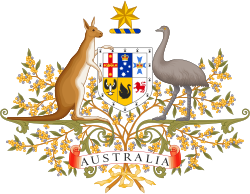John Howard
John Winston Howard, OM, AC (born 26 July 1939) is an Australian former politician who served as the 25th Prime Minister of Australia, in office from 1996 to 2007. He is the second-longest serving prime minister, behind only Sir Robert Menzies, and the oldest living former prime minister following the death of Bob Hawke in 2019. He was leader of the Liberal Party from 1985 to 1989 and from 1995 to 2007.
John Howard OM AC | |
|---|---|
Howard in 2003 | |
| 25th Prime Minister of Australia | |
| In office 11 March 1996 – 3 December 2007 | |
| Monarch | Elizabeth II |
| Governor-General | Sir William Deane Peter Hollingworth Michael Jeffery |
| Deputy | Tim Fischer John Anderson Mark Vaile |
| Preceded by | Paul Keating |
| Succeeded by | Kevin Rudd |
| Treasurer of Australia | |
| In office 19 November 1977 – 11 March 1983 | |
| Prime Minister | Malcolm Fraser |
| Preceded by | Phillip Lynch |
| Succeeded by | Paul Keating |
| Minister for Special Trade Negotiations | |
| In office 17 July 1977 – 20 December 1977 | |
| Prime Minister | Malcolm Fraser |
| Preceded by | Position established |
| Succeeded by | Victor Garland |
| Minister for Business and Consumer Affairs | |
| In office 22 December 1975 – 17 July 1977 | |
| Prime Minister | Malcolm Fraser |
| Preceded by | Sir Bob Cotton |
| Succeeded by | Wal Fife |
| Leader of the Opposition | |
| In office 30 January 1995 – 11 March 1996 | |
| Deputy | Peter Costello |
| Preceded by | Alexander Downer |
| Succeeded by | Kim Beazley |
| In office 5 September 1985 – 9 May 1989 | |
| Deputy | Neil Brown Andrew Peacock |
| Preceded by | Andrew Peacock |
| Succeeded by | Andrew Peacock |
| 8th Leader of the Liberal Party | |
| In office 30 January 1995 – 29 November 2007 | |
| Deputy | Peter Costello |
| Preceded by | Alexander Downer |
| Succeeded by | Brendan Nelson |
| In office 5 September 1985 – 9 May 1989 | |
| Deputy | Neil Brown Andrew Peacock |
| Preceded by | Andrew Peacock |
| Succeeded by | Andrew Peacock |
| Deputy Leader of the Liberal Party of Australia | |
| In office 8 April 1982 – 5 September 1985 | |
| Leader | Malcolm Fraser Andrew Peacock |
| Preceded by | Phillip Lynch |
| Succeeded by | Neil Brown |
| Manager of Opposition Business in the House | |
| In office 7 April 1993 – 31 January 1995 | |
| Leader | John Hewson |
| Preceded by | Warwick Smith |
| Succeeded by | Peter Reith |
| Member of the Australian Parliament for Bennelong | |
| In office 18 May 1974 – 24 November 2007 | |
| Preceded by | John Cramer |
| Succeeded by | Maxine McKew |
| Chairperson-in-office of the Commonwealth of Nations | |
| In office 2 March 2002 – 5 December 2003 | |
| Head | Elizabeth II |
| Preceded by | Thabo Mbeki |
| Succeeded by | Olusegun Obasanjo |
| Chairman of the International Democrat Union | |
| In office 2002–2014 | |
| Preceded by | William Hague |
| Succeeded by | John Key |
| Personal details | |
| Born | John Winston Howard 26 July 1939 Earlwood, New South Wales, Australia |
| Political party | Liberal Party of Australia |
| Other political affiliations | Coalition |
| Spouse(s) | |
| Children | 3 |
| Parents | Lyall Howard Mona McKell |
| Relatives | Bob Howard (brother) |
| Education | Canterbury Boys' High School |
| Alma mater | University of Sydney |
| Occupation | Commercial lawyer |
| Profession | Solicitor Politician |
| Signature | |
Howard was born in Sydney and studied law at the University of Sydney. He was a commercial lawyer before entering parliament. A former federal president of the Young Liberals, he first stood for office at the 1968 New South Wales state election, but lost narrowly. At the 1974 federal election, Howard was elected to the Division of Bennelong, which he would go on to represent until 2007. He was promoted to cabinet in 1977, and later in the year replaced Phillip Lynch as Treasurer of Australia, remaining in that position until the defeat of Malcolm Fraser's government in 1983.
In 1985, Howard was elected leader of the Liberal Party for the first time, thus replacing Andrew Peacock as Leader of the Opposition. He led the Liberal–National coalition to the 1987 federal election, but lost to Bob Hawke's Labor government, and was removed from the leadership in 1989. Remaining a key figure in the party, Howard was re-elected leader in 1995 (replacing Alexander Downer), and subsequently led the Coalition to victory at the 1996 federal election.
After defeating Paul Keating's Labor government in 1996, the Howard Government was re-elected at the 1998, 2001 and 2004 elections. Howard's actions as prime minister included new gun laws (in response to the Port Arthur massacre), the introduction of a nationwide value-added tax, immigration reform, and industrial relations reform. Australia also contributed troops to the War in Afghanistan and the Iraq War under his government, and led the International Force for East Timor. The Howard government was defeated at the 2007 federal election, with the Labor Party's Kevin Rudd succeeding him as prime minister. Howard also lost his own seat at the election, becoming only the second prime minister to do so (after Stanley Bruce in 1929).
Early and personal life

John Winston Howard is the fourth son of Mona (née Kell) and Lyall Howard. His parents were married in 1925. Howard was also known as "Jack" in his youth.[1] His older brothers were Stanley (1926–2014), Walter (b. 1929) and Robert (b. 1936). Lyall Howard was an admirer of Winston Churchill.[2] Howard's ancestors were English, Scottish, and Irish.[3]
Howard was born and raised in the Sydney suburb of Earlwood, in a Methodist family.[4] His mother had been an office worker until her marriage. His father and his paternal grandfather, Walter Howard, were both veterans of the First AIF in World War I. They also ran two Dulwich Hill petrol stations where Howard worked as a boy.[5] In 1955, when Howard was aged 16, his father died leaving his mother to take care of him.[6]
Howard suffered a hearing impairment in his youth, leaving him with a slight speech impediment,[7] and he continues to wear a hearing aid. It also influenced him in subtle ways, limiting his early academic performance; encouraging a reliance on an excellent memory; and in his mind ruling out becoming a barrister as a likely career.[8]
Howard attended Earlwood Primary School and Canterbury Boys' High School.[1] He won a citizenship prize in his final year at Earlwood (presented by local politician Eric Willis), and subsequently represented his secondary school at debating as well as cricket and rugby union.[9] Cricket remained a lifelong hobby.[4] In his final year at school he took part in a radio show hosted by Jack Davey, Give It a Go, broadcast on the commercial radio station, 2GB.[10] After gaining his Leaving Certificate, he studied law at the University of Sydney, graduating with a Bachelor of Laws degree in 1961.[1] Howard began working for the firm of Stephen Jaques and Stephen as a junior solicitor.[11] In 1964, he took a trip around the world, visiting Britain, Europe, Israel, India, and Singapore.[12] After returning to Sydney in 1965, he began working for Clayton Utz, but "lacked the university grades and the social connections to be on track for a partnership". He subsequently moved to a smaller firm, which became Truman, Nelson and Howard after he was made a partner.[13]
Howard married fellow Liberal Party member Janette Parker in 1971, with whom he had three children: Melanie (1974), Tim (1977) and Richard (1980).[14] John and Janette are Christians.[15]
Early political career, 1957–77
Howard joined the Liberal Party in 1957. He was a member of the party's New South Wales state executive and served as federal president of the Young Liberals (the party youth organisation) from 1962 to 1964.[16] Howard supported Australia's involvement in the Vietnam War, although has since said there were "aspects of it that could have been handled and explained differently".[17]
At the 1963 federal election, Howard acted as campaign manager for Tom Hughes in his local seat of Parkes. Hughes went on to defeat the 20-year Labor incumbent, Les Haylen.[18] In mid-1964, Howard travelled to London to work and travel for a period. He volunteered for the Conservative Party in the electorate of Holborn and St Pancras South at the 1964 UK general election.[19]
In 1967, with the support of party power brokers John Carrick and Eric Willis, Howard was endorsed as candidate for the marginal suburban state seat of Drummoyne, held by Labor's Reg Coady. Howard's mother sold the family home in Earlwood and rented a house with him at Five Dock, a suburb within the electorate. At the election in February 1968, in which the incumbent state Liberal government was returned to office, Howard narrowly lost to Coady, despite campaigning vigorously.[20] Howard and his mother subsequently returned to Earlwood, moving to a house on the same street where he grew up.
At the 1974 federal election, Howard successfully contested the Division of Bennelong, located in suburban Sydney. The election saw the return of the Gough Whitlam-led Labor government. Howard supported Malcolm Fraser for the leadership of the Liberal Party against Billy Snedden following the 1974 election.[21] When Fraser won office at the 1975 federal election, Howard was appointed Minister for Business and Consumer Affairs, a position in which he served until 1977.[22] At this stage, he followed the protectionist and pro-regulation stance of Fraser and the Liberal Party.[23]
Federal Treasurer (1977–83)
In December 1977, aged 38, Howard was appointed Treasurer in place of Phillip Lynch.[22] He was the youngest Treasurer since Chris Watson in 1904. Fraser said in his memoirs that he appointed him despite his limited experience because "he was bright and he got across a brief well, and he was a good manager".[24] During his five years in the position, Howard became an adherent of free-market economics,[25] which was challenging economic orthodoxies in place for most of the century.[26] He came to favour tax reform including broad-based taxation (later the GST), a freer industrial system including the dismantling of the centralised wage-fixing system, the abolition of compulsory trade unionism, privatisation and deregulation.[4]
In 1978, the Fraser government instigated the Campbell Committee to investigate financial system reforms.[27] Howard supported the Campbell report, but adopted an incremental approach with Cabinet, as there was wide opposition to deregulation within the government and the treasury.[27][28] The process of reform began before the committee reported 2½ years later, with the introduction of the tender system for the sale of Treasury notes in 1979, and Treasury bonds in 1982. Ian Macfarlane described these reforms as "second only in importance to the float of the Australian dollar in 1983."[29] In 1981, Howard proposed a broad-based indirect tax with compensatory cuts in personal rates; however, cabinet rejected it citing both inflationary and political reasons.[30] After the free-marketeers or "drys" of the Liberals challenged the protectionist policies of Minister for Industry and Commerce Phillip Lynch, they shifted their loyalties to Howard. Following an unsuccessful leadership challenge by Andrew Peacock to unseat Fraser as prime minister, Howard was elected deputy leader of the Liberal Party in April 1982. His election depended largely on the support of the "drys", and he became the party's champion of the growing free-market lobby.[31]
The economic crises of the early 1980s brought Howard into conflict with the economically conservative Fraser. As the economy headed towards the worst recession since the 1930s, Keynesian Fraser pushed an expansionary fiscal position much to Howard's and Treasury's horror. With his authority as treasurer being flouted, Howard considered resigning in July 1982, but, after discussions with his wife and senior advisor John Hewson, he decided to "tough it out".[26] The 1982 wages explosion—wages rose 16 per cent across the country—resulted in stagflation; unemployment touched double-digits and inflation peaked at 12.5% (official interest rates peaked at 21%).[32]
The Fraser Government with Howard as Treasurer lost the 1983 election to the Labor Party led by Bob Hawke. Over the course of the 1980s, the Liberal party came to accept the free-market policies that Fraser had resisted and Howard had espoused. Policies included low protection, decentralisation of wage fixation, financial deregulation, a broadly based indirect tax, and the rejection of counter-cyclical fiscal policy.[33]
Opposition, 1983–96
Following the defeat of the Fraser government and Fraser's subsequent resignation from parliament, Howard contested the Liberal leadership against Andrew Peacock, losing 36–20. However, he was re-elected as deputy leader. The Liberal Party were again defeated by Labor at the early 1984 election. In 1985, as Labor's position in opinion polls improved, Peacock's popularity sank and Howard's profile rose. Leadership speculation persisted, and Peacock said he would no longer accept Howard as deputy unless he offered assurances that he would not challenge for the leadership. Following Howard's refusal to offer such an assurance, Peacock sought, in September 1985, to replace him with John Moore as Deputy Leader.[34] The party room re-elected Howard as deputy on 5 September 38 votes to 31, which Peacock treated as a vote of no confidence in his leadership. He subsequently called a leadership ballot, which he chose not to contest. Howard defeated Jim Carlton by 57 votes to six, thus becoming Leader of the Opposition.[35][36][37]
Leader of the Opposition (1985–89)
New economic policy
Howard was in effect the Liberal party's first pro-market leader in the conservative coalition and spent the next two years working to revise Liberal policy away from that of Fraser's.[38] In his own words he was an "economic radical" and a social conservative.[39] Referring to the pro-market liberalism of the 1980s, Howard said in July 1986 that "The times will suit me".[40] That year the economy was seen to be in crisis with a 40% devaluation of the Australian dollar, a marked increase in the current account deficit and the loss of the Federal Government's triple A rating.[40] In response to the economic circumstances, Howard persistently attacked the Labor government and offered his free-market reform agenda.[40] Support for the Labor Party and Hawke strengthened in 1985 and 1986 and Howard's approval ratings dropped in the face of infighting between Howard and Peacock supporters, a "public manifestation of disunity" over policy positions, and questions over Howard's leadership.[34][41]
Hawke called the 1987 election six months early. In addition to the Howard–Peacock rivalry, Queensland National Party criticism of the federal Liberal and National leadership [42] culminated in longtime Queensland Premier Joh Bjelke-Petersen making a bid to become Prime Minister himself—the "Joh for Canberra" campaign. Keating campaigned against Howard's proposed tax changes forcing Howard to admit a double-counting in the proposal,[43] and emphasising to the electorate that the package would mean at that stage undisclosed cuts to government services. Howard was not helped when the federal Nationals broke off the Coalition agreement in support of the "Joh for Canberra" push. Bjelke-Petersen abandoned his bid for Prime Minister a month before the election. However, the damage had already been done. The end of the Coalition agreement led to a large number of three-cornered contests. Additionally, a number of swing voters outside Queensland were alarmed at the prospect of Bjelke-Petersen holding the balance of power, and voted for Labor in order to ensure that the Liberals and Nationals would be defeated. As a result, the Hawke Government was handily reelected, winning the most seats that Labor had ever won in an election.
Social agenda
In his social agenda, Howard promoted the traditional family and was antipathetic to the promotion of multiculturalism at the expense of a shared Australian identity.[44] The controversial immigration policy, One Australia, outlined a vision of "one nation and one future" and opposed multiculturalism.[39] Howard publicly suggested that to support "social cohesion" the rate of Asian immigration be "slowed down a little".[45] The comments divided opinion within the Coalition, and undermined Howard's standing amongst Liberal party figures including federal and state Ministers, intellectual opinion makers, business leaders, and within the Asia Pacific. Three Liberal MPs crossed the floor and two abstained in response to a motion put forward by Prime Minister Hawke to affirm that race or ethnicity would not be used as immigrant selection criteria. Many Liberals later nominated the issue as instrumental in Howard subsequently losing the leadership in 1989.[46] In a 1995 newspaper article (and in 2002 as Prime Minister), Howard recanted his 1988 remarks on curbing Asian immigration.[47][48]
In line with "One Australia's" rejection of Aboriginal land rights, Howard said the idea of an Aboriginal treaty was "repugnant to the ideals of One Australia"[39] and commented "I don't think it is wrong, racist, immoral or anything, for a country to say 'we will decide what the cultural identity and the cultural destiny of this country will be and nobody else."[49]
Loss of the leadership
As the country's economic position worsened in 1989, public opinion moved away from Labor, however there was no firm opinion poll lead for Howard or the Coalition.[50] In February, Liberal Party president and prominent businessman, John Elliott, said confidentially to Andrew Peacock that he would support him in a leadership challenge against Howard,[43] and in May a surprise leadership coup was launched, ousting Howard as Liberal leader. When asked that day whether he could become Liberal leader again, Howard likened it to "Lazarus with a triple bypass".[51] The loss of the Liberal Party leadership to Peacock deeply affected Howard, who admitted he would occasionally drink too much.[52] Declining Peacock's offer of Shadow Education, Howard went to the backbench and a new period of party disunity ensued. Howard served as Shadow Minister for Industry, Technology and Communications, Shadow Minister Assisting the Leader on the Public Service, Chairman of the Manpower and Labour Market Reform Group, Shadow Minister for Industrial Relations and Manager of Opposition Business in the House.
Following the Coalition's 1990 election loss, Howard considered challenging Peacock for the leadership, but didn't have enough support for a bid. Ultimately, Peacock resigned and was replaced with former Howard staffer John Hewson who defeated Peter Reith. Peacock supported Hewson with generational change which took Howard's name out.[53] Howard was a supporter of Hewson's economic program, with a Goods and Services Tax (GST) as its centrepiece. After Hewson lost the "unloseable" 1993 election to Paul Keating, Howard unsuccessfully challenged Hewson for the leadership. In 1994, he was again passed over for the leadership, which went to Alexander Downer.
Leader of the Opposition (1995–96)
In January 1995, leaked internal Liberal Party polling showed that with gaffe-prone Downer as leader, the Coalition had slim chance of holding its marginal seats in the next election, let alone of winning government. Media speculation of a leadership spill ended when, on 26 January 1995, Downer resigned as Liberal Leader and Howard was elected unopposed to replace him.[48] The Coalition subsequently opened a large lead over Labor in most opinion polls, and Howard overtook Paul Keating as preferred prime minister. Hoping to avoid a repeat of 1993, Howard revised his earlier statements against Medicare and Asian immigration, describing Australia as "a unique intersection between Europe, North America and Asia".[17][47] This allowed Howard to campaign on a "small-target" strategy. He focused on the economy and memory of the early 1990s recession, and on the longevity of the Labor government, which in 1996 had been in power for 13 years.
Prime Minister (1996–2007)
.jpg)
1996 election
First term, 1996–98
By the time the writs were issued for the 1996 election, the Coalition had been well ahead of Labor in opinion polls for over a year. The consensus of most opinion polls was that Howard would be the next prime minister.
With the support of many traditionally Labor voters—dubbed "Howard battlers"—Howard and the Liberal-National Coalition swept to power on the back of a 29-seat swing. This was the second-worst defeat of an incumbent government since Federation. The Coalition picked up a five percent swing. However, the Coalition took 13 seats off Labor in New South Wales, and won all but two seats in Queensland. The Liberals actually won a majority in their own right with 75 seats, the most that the party had ever won. It was only the third time (the others being 1975 and 1977) that the main non-Labor party has been even theoretically able to govern alone since the Coalition's formation. Nevertheless, Howard kept the Nationals in his government.
Howard entered office with a 45-seat majority—the second-biggest majority in Australian history, only behind Fraser's 55-seat majority in 1975. At the age of 56, he was sworn in as prime minister on 11 March 1996, ending a record 13 years of Coalition opposition.[22] Howard departed from tradition and made his primary residence Kirribilli House in Sydney rather than The Lodge in Canberra.[54] Early in the term Howard had championed significant new restrictions on gun ownership following the Port Arthur massacre in which 35 people had been shot dead. Achieving agreement in the face of immense opposition from within the Coalition and some State governments, was credited with significantly elevating Howard's stature as prime minister despite a backlash from core Coalition rural constituents.[55][56][57][58]
Howard's initial silence on the views of Pauline Hanson—a disendorsed Liberal Party candidate and later independent MP from the Brisbane area—was criticised in the press as an endorsement of her views.[59] When Hanson had made derogatory statements about minorities, Howard not only canceled her Liberal endorsement, but declared she would not be allowed to sit as a Liberal if elected.[60] Howard repudiated Hanson's views seven months after her maiden speech.[59]
Following the Wik Decision of the High Court in 1996, the Howard government moved swiftly to legislate limitations on its possible implications through the so-called Ten-Point Plan.
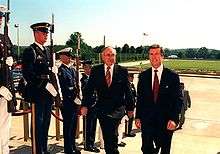
From 1997, Howard spearheaded the Coalition push to introduce a Goods and Services Tax (GST) at the 1998 election. Before winning the Prime Ministership, Howard said that he considered the Coalition's defeat in 1993 to be a rejection of the GST, and as a result it would "never ever" be part of Coalition policy.[61] A long-held conviction of Howard's, his tax reform package was credited with "breaking the circuit" of party morale—boosting his confidence and direction, which had appeared to wane early in the Government's second term.[62] The 1998 election was dubbed a "referendum on the GST", and the tax changes—including the GST—were implemented in the government's second term after amendments to the legislation were negotiated with the Australian Democrats to ensure its passage through the Senate.
Through much of its first term, opinion polling was disappointing for the government.[63][64][65] The popularity of Pauline Hanson, and the new restrictions on gun ownership drew many traditionally Coalition voters away from the Howard government. Also unpopular with voters were large spending cuts aimed at eliminating the budget deficit (and Howard's distinction between "core" and "non-core" election promises when cutting spending commitments), industrial changes and the 1998 waterfront dispute, the partial sale of government telecommunications company Telstra, and the Government's commitment to a GST.
Howard called a snap election for October 1998, three months sooner than required. The Coalition actually lost the national two-party preferred vote to Labor, suffering a 14-seat swing. However, the uneven nature of the swing allowed Howard to win a second term in government, with a considerably reduced majority (from 45 seats to 12). Howard himself finished just short of a majority on the first count in his own seat, and was only assured of reelection on the ninth count. He ultimately finished with a fairly comfortable 56 percent of the two-party preferred vote.
Second term, 1998–2001
In 1998, Howard convened a Constitutional Convention which decided in principle that Australia should become a Republic. At the convention Howard confirmed himself as a monarchist, and said that of the Republican options, he preferred the minimalist model. Howard outlined his support for retaining the Australian constitutional monarchy.[66] Despite opinion polls suggesting Australians favoured a republic, a 1999 referendum rejected the model chosen by the convention.

Although new Indonesian President B.J. Habibie had some months earlier agreed to grant special autonomy to Indonesian-occupied East Timor, his subsequent snap decision for a referendum on the territory's independence triggered a Howard and Downer orchestrated shift in Australian policy. In September 1999, Howard organised an Australian-led international peace-keeping force to East Timor (INTERFET), after pro-Indonesia militia launched a violent "scorched-earth" campaign in retaliation to the referendum's overwhelming vote in favour of independence. The successful mission was widely supported by Australian voters, but the government was criticised for "foreign policy failure" following the violence and collapse of diplomatic relations with Indonesia. By Howard's fourth term, relations with Indonesia had recovered to include counter-terrorism cooperation and Australia's $1bn Boxing Day Tsunami relief efforts, and were assisted by good relations between Howard and Indonesian President Susilo Bambang Yudhoyono.[67]
Throughout his prime-ministership, Howard was resolute in his refusal to provide a parliamentary "apology" to Indigenous Australians as recommended by the 1997 "Bringing Them Home" Report. Howard made a personal apology before the release of the report.[68]
In 1999 Howard negotiated a "Motion of Reconciliation" with Aboriginal Senator Aden Ridgeway. Eschewing use of the word "sorry", the motion recognised mistreatment of Aborigines as the "most blemished chapter" in Australia's history; offered "deep and sincere regret" for past injustices.[69] Following his 2007 loss of the prime ministership, Howard was the only living former prime minister who declined to attend the February 2008 apology made by Kevin Rudd with bi-partisan support.[70]
Howard did not commit to serving a full term if he won the next election; on his 61st birthday in July 2000 he said he would consider the question of retirement when he turned 64.[71] This was interpreted as boosting Costello's leadership aspirations, and the enmity over leadership and succession resurfaced publicly when Howard did not retire at the age of 64.[72][73] In the first half of 2001, rising petrol prices, voter enmity over the implementation of the GST, a spike in inflation and economic slowdown led to bad opinion polls and predictions the Government would lose office in the election later that year.[74] The government announced a series of policy reversals and softenings which boosted the government's fortunes, as did news that the economy had avoided recession. The government's position on "border protection", in particular the Tampa affair where Howard refused the landing of asylum seekers rescued by a Norwegian freighter, consolidated the improving polls for the government, as did the 11 September 2001 attacks.[75] Howard led the government to victory in the 2001 federal election with an increased majority.[76][77][78]
Third term, 2001–04
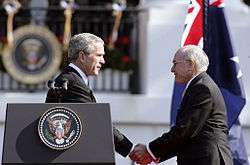
Howard had first met US President George W. Bush in the days before the 11 September terrorist attacks and was in Washington the morning of the attacks.[79] In response to the attacks, Howard invoked the ANZUS Treaty. In October 2001, he committed Australian military personnel to the War in Afghanistan despite widespread opposition. Howard developed a strong personal relationship with the President,[80] and they shared often similar ideological positions – including on the role of the United States in world affairs and their approach to the "War on Terror". In May 2003, Howard made an overnight stay at Bush's Prairie Chapel Ranch in Texas, after which Bush said that Howard "...is not only a man of steel, he's showed the world he's a man of heart."[81]
In April 2002, Howard was the first Australian prime minister to attend a royal funeral, that of Queen Elizabeth The Queen Mother. In October Howard responded to the 2002 Bali bombing with calls for solidarity.[82] Howard re-dedicated his government to the "War on Terror".
In March 2003, Australia joined the US-led "Multinational force in Iraq" in sending 2,000 troops and naval units to support in the invasion of Iraq. In response to the Australian participation in the invasion, there were large protests in Australian cities during March 2003, and Prime Minister Howard was heckled from the public gallery of Parliament House.[83] While opinion polls showed that opposition to the war without UN backing was between 48 and 92 per cent,[84] Howard remained preferred prime-minister over the Leader of the Opposition, Simon Crean, although his approval ratings were lower compared to before the war.[85][86]
Throughout 2002 and 2003 Howard had increased his opinion poll lead over Labor Party leader, Simon Crean. In December 2003, Crean resigned after losing party support and Mark Latham was elected leader. Howard called an election for 9 October 2004. While the government was behind Labor in the opinion polls, Howard himself had a large lead over Latham as preferred prime minister. In the lead up to the election, Howard again did not commit to serving a full term.[87] Howard attacked Latham's economic record as Mayor of Liverpool City Council and attacked Labor's economic history.[88] The election resulted in a five-seat swing to the Coalition, netting it a majority almost as large as in 1996. It also resulted the first, albeit slim, government majority in the Senate since 1981. For the second time since becoming prime minister, Howard came up short of a majority in the first count for his own seat. He was assured of reelection on the third count, ultimately winning 53.3 percent of the two-party preferred vote.[89] On 21 December 2004, Howard overtook Bob Hawke to become the second longest-serving Australian prime minister after Sir Robert Menzies.[90]
Fourth term, 2004–07
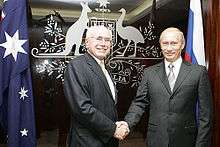
In 2006, with the government now controlling both houses of parliament for the first time since the Fraser era, industrial relations changes were enacted. Named "WorkChoices" and championed by Howard, they were intended to fundamentally change the employer-employee relationship. Opposed by a broad trade union campaign and antipathy within the electorate, WorkChoices was subsequently seen as a major factor in the government's 2007 election loss.[91][92][93]
In April 2006, the government announced it had completely paid off the last of $96 billion of Commonwealth net debt inherited when it came to power in 1996.[94] By 2007, Howard had been in office for 11 of the 15 years of consecutive annual growth for the Australian economy. Unemployment had fallen from 8.1% at the start of his term to 4.1% in 2007,[95][96] and average weekly earnings grew 24.4% in real terms. During his Prime Ministership, opinion polling consistently showed that a majority of the electorate thought his government were better to handle the economy than the Opposition.[97]
In 2006, Ian McLachlan and Peter Costello said that under a 1994 deal between Howard and Costello, Howard would serve one and a half terms as prime minister if the Coalition won the next election before stepping aside to allow Costello to take over. Howard denied that this constituted a deal;[98][99][100] Citing strong party room support for him as leader, Howard stated later that month that he would remain to contest the 2007 election.[101] Six weeks before the election, Howard indicated he would stand down during the next term, and anointed Costello as his successor.[102] The Coalition trailed Labor in opinion polls from mid-2006 onward, but Howard still consistently led Labor leader Kim Beazley on the question of preferred Prime Minister.[103] In December 2006, after Kevin Rudd became Labor leader, the two-party preferred deficit widened even further and Rudd swiftly overtook Howard as preferred prime minister. Howard chaired APEC Australia 2007, culminating in the APEC Economic Leaders Meeting in Sydney during September.[104] The meeting was at times overshadowed by further leadership speculation following continued poor poll results.[105]
In May 2006, the degradation of Aboriginal communities, and the frequent child sexual abuses that occurred within these, was brought to the forefront of the public's mind. In response to this, a report into child sexual abuse in the Northern Territory was commissioned. Following this, there was an intervention into these Northern Territory communities. This received widespread criticism, with some holding that it was no more than another attempt to control these communities. Howard was not exempt from this criticism on the grounds of racism.[106]
Howard supported the Bush administration's 2007 surge strategy in Iraq, and criticised Democrat US Presidential candidate Barack Obama for calling for a complete withdrawal of Coalition troops by March 2008.[107]
2007 election
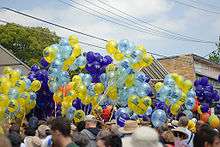
Leading up to the 24 November election, the Coalition had been behind Labor in the polls for almost two years, a margin that grew even larger after Rudd became opposition leader. In the election, Howard and his government were defeated, suffering a 23-seat swing to Labor, which was almost as large as the 29-seat swing that propelled him to power in 1996. Howard lost his seat of Bennelong to former journalist Maxine McKew by 44,685 votes (51.4 percent) to Howard's 42,251 (48.6 percent). The latest redistribution placed Bennelong right on the edge of seats Labor needed to win in order to make Rudd Prime Minister. The ABC actually listed Bennelong as a Labor gain on election night.[108][109] However, the final result remained in doubt for a few days after the election. The final tally indicated that McKew defeated Howard on the 14th count due to a large flow of Green preferences to her; 3,793 (78.84 percent) of Green voters listed McKew as their second preference.[110] Howard was only the second Australian prime minister to lose his seat in an election since Stanley Bruce in 1929.[111] He remained in office as caretaker prime minister until the formal swearing in of Rudd's government on 3 December.[112]
Media analysis of The Australian Election Study, a postal survey of 1,873 voters during the 2007 poll, found that although respondents respected Howard and thought he had won the 6-week election campaign, Howard was considered "at odds with public opinion on cut-through issues", his opponent had achieved the highest "likeability" rating in the survey's 20-year history, and a majority had decided their voting intention before the election campaign.[113]
After politics (2007–present)
In January 2008, Howard signed with the speaking agency called the Washington Speakers Bureau, joining Tony Blair, Colin Powell, Madeleine Albright, and others. He was available for two speeches, Leadership in the New Century and The Global Economic Future.[114]
The Australian and New Zealand cricket boards unsuccessfully nominated Howard as their candidate for president of the International Cricket Council.[115] Howard was the chairman of the International Democrat Union, a body of international conservative political parties, until December 2014, when he was succeeded by John Key of New Zealand.[116] In 2008, he was appointed a director of the foundation established to preserve the legacy of Donald Bradman.[117]
Howard's autobiography Lazarus Rising: A Personal and Political Autobiography was released on 26 October 2010.[118]
In 2014 Howard published The Menzies Era, concerning the premiership of Prime Minister Robert Menzies.[119]
Howard was the subject of a lengthy interview series by The Australian columnist Janet Albrechtsen in 2014, which aired as a featured story on Seven Network's Sunday Night, and again in January 2015 as its own five-part series on Sky News Australia entitled Howard Defined.[120]
In November 2017, Howard launched the Ramsay Centre for Western Civilisation, headed by Simon Haines, formerly professor of English at the Chinese University of Hong Kong.[121][122]
In 2017, Howard endorsed a "No" vote in the Australian Marriage Law Postal Survey and joined the campaign against same-sex marriage.
On 26 February 2019 Howard provided a character reference for Cardinal George Pell, a senior leader of the Catholic Church in Australia and former Vatican Treasurer, whose conviction on five counts of child sexual abuse while Archbishop of Melbourne was later overturned by the High Court..[123][124] Howard's character reference followed Pell's convictions, and was provided along with nine others[125] to support Pell's barrister's submissions in the pre-sentencing hearing.[126]
Honours
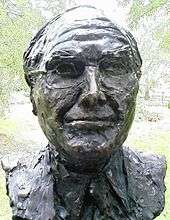
Orders
.svg.png)

Medals
.svg.png)
Foreign honours
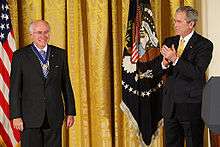
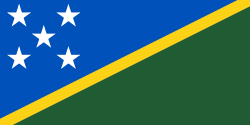


Organisations
.svg.png)





Appointments

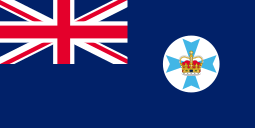
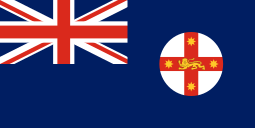

Bibliography
Books
- Prime Minister John Howard (2007). "Contributor". Laugh Even Louder!. By Camp Quality. Gosford, New South Wales: Scholastic Australia Pty Limited. ISBN 978-1-74169-022-4.[143]
- Howard, John (2010). Lazarus rising : a personal and political autobiography.
- — (2014). The Menzies era.
Parliamentary speeches
- Howard, John W. (4 February 2003), "Ministerial Statements: Iraq" (PDF), Hansard, Parliament of Australia
Book reviews
| Year | Review article | Work(s) reviewed |
|---|---|---|
| 2016 | Howard, John (January–February 2016). "Seized with outcomes". Quadrant. 60 (1–2): 73–75. | Moore, Charles (2015). Margaret Thatcher : the authorized biography, volume two : everything she wants. Allen Lane. |
Works about Howard and his times
- Barnett, David; Goward, Pru (1997), John Howard, Prime Minister, Viking, ISBN 0-670-87389-6
- Bell, Stephen (2004), Australia's Money Mandarins, Cambridge University Press, ISBN 0-521-83990-4
- Boucher, Geoff; Sharpe, Matthew (2008), The Times Will Suit Them: Postmodern Conservatism in Australia, Allen & Unwin, ISBN 978-1-74175-624-1
- Cater, Nick (2006), The Howard Factor, Melbourne University Publishing, ISBN 0-522-85284-X
- Clune, David (2002), "Back to the future?: the November 2001 Federal election", Australasian Parliamentary Review, 17 (1): 3–16, ISSN 1447-9125
- Clune, David (2005), "Howard at the crossroads?: the October 2004 Federal Election", Australasian Parliamentary Review, 20 (1): 3–20, ISSN 1447-9125
- Errington, Wayne; Van Onselen, Peter (2007), John Winston Howard: The Biography, Melbourne: Melbourne University Press, ISBN 978-0-522-85334-6CS1 maint: ref=harv (link)
- Garran, Robert (2004), True Believer: John Howard, George Bush and the American Alliance, Sydney, Australia: Allen & Unwin, ISBN 1-74114-418-3
- Grattan, Michelle (2000), 'John Winston Howard', in Michelle Grattan (ed.), Australian Prime Ministers, New Holland, Frenchs Forest, New South Wales, Pages 436–463. ISBN 1-86436-756-3
- Gulmanelli, Stefano. "John Howard and the ‘Anglospherist’ reshaping of Australia." Australian Journal of Political Science 49#4 (2014): 581–595.
- Hartcher, Peter (2009), To the Bitter End: The Dramatic Story of the Fall of John Howard and the Rise of Kevin Rudd, Crows Nest, NSW: Allen & Unwin, ISBN 978-1-74175-623-4
- Kelly, Paul (1992), The End of Certainty: Power, Politics, and Business in Australia, Sydney, Australia: Allen & Unwin, ISBN 1-86373-757-X
- Kingston, Margo (June 2004), Not Happy, John! defending Australia's democracy, Penguin, ISBN 0-14-300258-9
- Maddox, Marion (February 2005), God Under Howard: The rise of the religious right in Australian politics, St Leonards: Allen & Unwin, ISBN 1-74114-568-6
- Markus, Andrew (2001), Race: John Howard and the Remaking of Australia, Sydney, Australia: Allen & Unwin, ISBN 1-86448-866-2
- Marr, David; Wilkinson, Marian (August 2005), Dark Victory, St Leonards: Allen & Unwin, ISBN 1-74114-447-7
- Wesley, Michael (2007), The Howard Paradox: Australian Diplomacy in Asia 1996–2006, ABC Books, ISBN 978-0-7333-2078-1
See also
References
- "Canterbury tales", Sydney Morning Herald, 18 September 2004, archived from the original on 15 October 2007, retrieved 5 September 2007
- Garran 2004, p. 10
- Errington & Van Onselen 2007, pp. 2–4.
- Kelly, Paul (19 May 1999), "The Common Man as Prime Minister", The Australian
- "Tin soldered for the King in Howard's home", Sydney Morning Herald, 19 June 2006, archived from the original on 6 November 2012, retrieved 29 August 2007
- Birnbauer, Bill, "Rise Of A Common Man", The Age, 4 March 1996.
- Transcript of the Prime Minister the Hon. John Howard MP, opening of the child deafness research laboratories at The Royal Victorian Eye and Ear Hospital, East Melbourne, Parlinfo, 16 February 2000, archived from the original on 15 January 2016, retrieved 8 July 2008
- Errington & Van Onselen 2007, pp. 21, 35.
- Beazley and Howard- Politics and Sport, Australian Broadcasting Corporation, 26 October 2001, archived from the original on 11 May 2011, retrieved 13 March 2007
- Recording Of John Howard At 16 On Jack Davey Quiz Show, australianpolitics.com, 9 June 2002, archived from the original on 1 December 2017, retrieved 19 November 2017
- Errington & Van Onselen 2007, p. 35.
- Errington & Van Onselen 2007, p. 39.
- Errington & Van Onselen 2007, p. 40.
- Australia's Prime Ministers : John Howard, National Archives of Australia, archived from the original on 30 August 2007, retrieved 27 November 2007
- Warhurst, John (11 November 2010). "The religious beliefs of Australia's prime ministers". Eureka Street. Archived from the original on 11 August 2019. Retrieved 27 July 2019.
- Young Liberals Life Members & Past Presidents, Young Liberals, 2006, archived from the original on 21 December 2005, retrieved 8 July 2006
- "John Howard Interview– 1996", Four Corners, 19 February 1996, archived from the original on 11 May 2011, retrieved 26 December 2006
- "John Howard – Before office". National Archives of Australia. Archived from the original on 23 September 2017. Retrieved 29 June 2017.
- Howard, John (2010). Lazarus Rising. Harper Collins. pp. 35–36. ISBN 9780732289959.
- Green, Antony. "1968 Drummoyne". New South Wales Election Results 1856-2007. Parliament of New South Wales. Retrieved 25 July 2020.
- Kelly (1994), p. 101.
- Prime Ministers of Australia: John Howard, National Museum of Australia, 1 August 2007, archived from the original on 26 March 2016, retrieved 14 August 2007
- Kelly (1994), pp. 101–103.
- Malcolm Fraser and Margaret Simons (2011). Malcolm Fraser: The Political Memoirs. The Miegunyah Press. p. 351.
- Kelly (1994), p. 102.
- Kelly (1994), pp. 50–53.
- Bell 2004, p. 21
- Kelly 1994, p. 78
- Boyer Lecture 3: Reform and Deregulation Archived 27 September 2011 at the Wayback Machine26 November 2006
- Kelly (1994), p. 49.
- Kelly (1994), pp. 49–50.
- F01 Interest rates and yields – money market, Reserve Bank of Australia, archived from the original (Excel file) on 29 July 2007, retrieved 29 August 2007
- Kelly (1994), p. 232.
- Barclay, Glen (August 1986), "Australian Political Chronicle: July–December 1985", Australian Journal of Politics and History, 32 (2): 264, ISSN 0004-9522
- George. "poliquant.com". poliquant.com. Archived from the original on 7 January 2014. Retrieved 17 August 2012.
- Kelly (1994), p. 192.
- Ramsay, Alan (6 March 2004), "Howard's labours are slipping away", The Sydney Morning Herald, p. 37, archived from the original on 14 October 2007, retrieved 7 August 2007
- "Australian Political Chronicle: January–June 1987", Australian Journal of Politics and History, 33 (3): 280–281, December 1987, doi:10.1111/j.1467-8497.1987.tb00153.x, ISSN 0004-9522
- Markus 2001, pp. 85–89
- Summers, Anne (18 August 2003), "The sad times do suit him; he made them", Sydney Morning Herald, archived from the original on 14 October 2007, retrieved 7 August 2007
- Barclay, Glen (December 1986), "Australian Political Chronicle: January–June 1986", Australian Journal of Politics and History, 32 (3): 455, doi:10.1111/j.1467-8497.1986.tb00890.x, ISSN 0004-9522
- "Australian Political Chronicle: January–June 1987", Australian Journal of Politics and History, 33 (3): 279–285, December 1987, doi:10.1111/j.1467-8497.1987.tb00153.x, ISSN 0004-9522
- Kelly, Paul (1994), The End of Certainty: Power, Politics, and Business in Australia, Allen & Unwin, pp. 427, 457, ISBN 1-86373-757-X, retrieved 5 October 2007
- Kelly (1994), pp. 419.
- Errington & Van Onselen 2007, p. 157.
- Kelly (1994), pp. 427–428.
- Megalogenis, George (27 February 2007), "Asian influence spices up contest", The Australian, p. 11, archived from the original on 25 August 2007, retrieved 27 July 2007
- Ward, Ian (December 1995), "Australian Political Chronicle: January–June 1995", Australian Journal of Politics and History, 41 (3)
- "When talk of racism is just not cricket", The Sydney Morning Herald, 16 December 2005, archived from the original on 21 March 2007, retrieved 19 August 2007
- Kelly (1994), p. 470.
- "Thoughts of a bypassed Lazarus", The Age, Melbourne, 29 February 2004, archived from the original on 10 May 2004, retrieved 25 July 2007
- "Howard: 'I was drunk at work'", The Courier-Mail, 25 July 2007, archived from the original on 3 September 2007, retrieved 25 July 2007
- Kelly, Paul (2011). "Big Bang Liberalism". The March of Patriots: The Struggle for Modern Australia. Melbourne, Australia: Melbourne Univ. Publishing. p. 45. ISBN 978-0-522-85738-2.
- Milne, Glenn (10 June 2007), PM hires out Kirribilli House, News.com.au, archived from the original on 15 June 2008, retrieved 25 April 2010
- The Howard Years (episode 4) (TV Series). Australia: Australian Broadcasting Corporation. 2008.
- Kelly, Paul (1–2 May 1997), "A Year of Governing Cautiously", The Weekend Australian
- Prime Ministers of Australia: John Howard Archived 26 March 2016 at the Wayback Machine, National Museum of Australia]
- Ward, Ian (December 1995), "Australian Political Chronicle: January–June 1995", Australian Journal of Politics and History, 41 (3): 444–448, doi:10.1111/j.1467-8497.1995.tb01274.x, ISSN 0004-9522
- The Howard Years – Chronology Archived 25 February 2009 at the Wayback Machine, Australian Broadcasting Corporation
- Liberal candidate Kevin Baker quits race for Charlton over lewd website Archived 31 October 2016 at the Wayback Machine. ABC News, 20 August 2013.
- A look back at Howard's ten years, Australia: ABC, archived from the original on 11 May 2011, retrieved 25 April 2010
- Errington & Van Onselen 2007, pp. 272–273.
- The Howard Years (episode 1) (TV Series). Australia: Australian Broadcasting Corporation. 2008.
- Ward, Ian (1998), "Australian Political Chronicle: July–December 1997" (PDF), Australian Journal of Politics and History, 44 (2): 233, doi:10.1111/1467-8497.00014
- Kelly, Paul (23 September 1998), "Howard's Big Picture and Big Gamble", The Australian
- "Pandora Archive". Pandora.nla.gov.au. 23 August 2006. Archived from the original on 10 December 1999. Retrieved 13 May 2011.
- 'Indonesia – Australian Relations: East Timor, Bali Bombing, Tsunami and Beyond' by Ambassador Imron Cotan, Kbri-canberra.org.au, archived from the original on 7 January 2010, retrieved 25 April 2010
- The History of Apologies Down Under [Thinking Faith – the online journal of the British Jesuits], Thinkingfaith.org, archived from the original on 2 December 2014, retrieved 25 April 2010
- ParlInfo – Title Details, Parlinfo.aph.gov.au, archived from the original on 19 October 2009, retrieved 25 April 2010
- Welch, Dylan (13 February 2008), "Kevin Rudd says sorry" (online briefing), The Sydney Morning Herald, archived from the original on 27 February 2010, retrieved 22 February 2008
- "When I'm 64: Howard", The 7:30 Report, Australian Broadcasting Corporation, 5 October 2001, archived from the original on 14 October 2007, retrieved 29 August 2007
- Henderson, Gerard (10 June 2003), "The high cost of Howard's big tease", The Age, Melbourne, p. 11, archived from the original on 11 December 2008, retrieved 12 January 2009
- Yaxley, Louise (3 June 2003), "PM decides to stay" (transcript), PM, Australian Broadcasting Corporation, archived from the original on 18 August 2005, retrieved 29 August 2007
- Wear, Rae (December 2001), "Australian Political Chronicle: January–June 2001", Australian Journal of Politics and History, 47 (4): 531–536, doi:10.1111/1467-8497.00244, ISSN 0004-9522
- "Tampa Crisis", Infobase (Atlas), Heinemann Interactive, archived from the original on 21 August 2006, retrieved 15 July 2006
- "Latest poll 'a nonsense': former Labor pollster", PM, Australian Broadcasting Corporation, 1 June 2004, archived from the original on 27 July 2009, retrieved 29 August 2007
- "Antony Green's Election Summary", Australia votes, Australian Broadcasting Corporation, 2004, archived from the original on 14 December 2007, retrieved 29 August 2007
- Carney, Shaun (11 September 2004), "The challenge for Australia", The Age, Melbourne, archived from the original on 27 July 2009, retrieved 29 August 2007
- Howard accepts Presidential Medal of Freedom, AM program transcript, ABC Radio, Australia: ABC, 14 January 2009, archived from the original on 27 March 2010, retrieved 25 April 2010
- Johnston, Tim (25 November 2007), "Ally of Bush Is Defeated in Australia", The New York Times, p. 8, archived from the original on 28 March 2019, retrieved 6 May 2008
- "Bush lauds Howard as 'man of steel'", The Sydney Morning Herald, 4 May 2003, archived from the original on 7 February 2008, retrieved 6 May 2008
- John Howard's Bali memorial speech – TVNZ Smartphone, tvnz.co.nz, 18 October 2002, archived from the original on 11 May 2011, retrieved 25 April 2010
- Malaysian PM condemns Iraq war, BBC News, 24 March 2003, archived from the original on 1 December 2008, retrieved 19 August 2008
- Riley, Mark (1 April 2003), "Support for the fight growing", Sydney Morning Herald, archived from the original on 25 September 2008, retrieved 22 August 2008
- When it was reported that Iraq did not possess weapons of mass destruction, 70% of Australians believed Howard misled them with most believing he did so unintentionally.
- Riley, Mark (24 September 2003), "Poll: majority of Australians 'feel misled' by Howard", Sydney Morning Herald, archived from the original on 25 September 2008, retrieved 22 August 2008
- "I'm committed and ready, says Latham", The 7:30 Report, Australian Broadcasting Corporation, 7 October 2004, archived from the original on 14 October 2007, retrieved 29 August 2007
- Wade, Matt (30 August 2004), "Labor means rate rises, PM claims", The Age, Australia, archived from the original on 14 October 2007, retrieved 29 August 2007
- "Archived copy". Archived from the original on 26 August 2015. Retrieved 29 November 2007.CS1 maint: archived copy as title (link)
- PM still favourite as he celebrates milestone, ABC News, 21 December 2004, archived from the original on 11 May 2011, retrieved 14 August 2007
- The Howard Years (episode 4) (TV Series). Australia: Australian Broadcasting Corporation. 2008.
- Wanna, John (2007), "Australian Political Chronicle: July–December 2007", Australian Journal of Politics and History, 54 (2): 291
- Wanna, John (1995), "Australian Political Chronicle: January–June 2007", Australian Journal of Politics and History, 53 (4): 619
- Costello, Peter (20 April 2006), Speech to the Committee for Economic Development of Australia : "DEBT-FREE DAY", archived from the original on 1 September 2007
- Australian Bureau of Statistics, Abs.gov.au, 6 April 2006, archived from the original on 11 June 2009, retrieved 25 April 2010
- Australia Bureau of Statistics, Abs.gov.au, 8 November 2007, archived from the original on 11 June 2009, retrieved 25 April 2010
- Newspoll (various 2000–2007)
- Steve Lewis (10 July 2006), Costello backers savage Howard, News Limited, archived from the original on 16 July 2006, retrieved 10 July 2006
- Glenn Milne (10 July 2006), No, Prime Minister, you cannot deny it, News Limited, archived from the original on 16 July 2006, retrieved 10 July 2006
- Howard promised me a handover: Costello / Howard rejects Costello's deal claim, Australian Broadcasting Corporation, 10 July 2006, archived from the original on 20 November 2008, retrieved 10 July 2006
- PM's decision to face electorate welcomed, ABC, 31 July 2006, archived from the original on 11 May 2011, retrieved 31 July 2006
- O'Brien, Kerry (12 September 2007), "John Howard on the latest round of leadership turmoil", The 7.30 Report, ABC, archived from the original on 18 October 2007, retrieved 12 September 2007
- Kassey Dickie (2006). The Union Show (04 July) (TV-Series). C31 Melbourne.
- APEC 2007 Taskforce, Department of Prime Minister and Cabinet, 30 June 2006, archived from the original on 31 August 2007, retrieved 13 September 2007
- "Leadership talk dogs PM", ABC Online, 7 September 2007, archived from the original on 9 September 2007, retrieved 11 September 2007
- Roffee, James A. (2016). "Rhetoric, Aboriginal Australians and the Northern Territory Intervention: A Socio-legal Investigation into Pre-legislative Argumentation". International Journal for Crime, Justice and Social Democracy. 5: 131. doi:10.5204/ijcjsd.v5i1.285.
- "PM not sorry for Obama attack". 12 February 2007. Archived from the original on 28 November 2015. Retrieved 23 November 2015.
- Bennelong (Key Seat), Australian Broadcasting Corporation, 25 November 2007, archived from the original on 24 November 2007, retrieved 25 November 2007
- Bennelong too close to call, says McKew, news.com.au, 25 November 2007, archived from the original on 9 March 2009, retrieved 25 November 2007
- "NSW Division – Bennelong: Two Candidate Preferred Preference Flow". Virtual Tally Room (results.aec.gov.au). Australian Electoral Commission. 11 December 2007. Archived from the original on 23 July 2008. Retrieved 3 February 2019.
- Bibby, Paul (12 December 2007). "Finally, Howard admits McKew has it". The Sydney Morning Herald. Archived from the original on 4 November 2012. Retrieved 3 February 2019.
- "Rudd feeling 'chipper' about swearing in". ABC News and Current Affairs. Australian Broadcasting Corporation. 3 December 2007. Archived from the original on 9 November 2012. Retrieved 3 February 2019.
Since the election John Howard has been Australia's caretaker prime minister but from mid-morning the country will officially be in Mr Rudd's hands.
- Mark Davis (24 May 2008), "What made battlers turn the tide", Sydney Morning Herald, Fairfax
- Maley, Paul (19 January 2008). "Howard signs up to talk the talk". The Australian. Archived from the original on 9 January 2009. Retrieved 25 April 2010.
- "Howard put up for ICC presidency". ABC News. Australia. 2 March 2010. Archived from the original on 4 March 2010. Retrieved 2 March 2010.
- http://www.idu.org/officers.aspx%7C Archived 6 April 2010 at the Wayback Machine Retrieved 11 April 2010
- "Board of Directors". Bradman Foundation. 2012. Archived from the original on 21 March 2012. Retrieved 14 February 2012.
- Kellie Lazaro (25 October 2010). "Kennett: Howard left no legacy as PM". AM. ABC. Radio National. Archived from the original on 31 October 2010. Retrieved 25 October 2010.
- John Howard (1 October 2014). The Menzies Era. HarperCollins Publishers. ISBN 978-1-74309-797-7. Archived from the original on 15 January 2016. Retrieved 25 November 2015.
- "Airdate: Howard Defined". TV Tonight. Archived from the original on 8 January 2015. Retrieved 8 January 2015.
- Robert Bolton, "Paul Ramsay donation paves way for new centre to study Western civilisation" Archived 4 March 2018 at the Wayback Machine, Australian Financial Review, 19 November 2017. Retrieved 4 March 2018.
- Alexandra Smith, "Universities line up for new Ramsay Centre for Western Civilisation" Archived 4 March 2018 at the Wayback Machine, The Sydney Morning Herald, 17 November 2017. Retrieved 4 March 2018.
- "'None of these matters alter my opinion': John Howard's character reference for George Pell" Archived 27 February 2019 at the Wayback Machine, The Age, 27 February 2019. Retrieved 27 February 2019.
- Henriques-Gomez, Luke (7 April 2020). "Cardinal George Pell leaves prison after high court quashes conviction – as it happened". The Guardian. Retrieved 7 April 2020.
- "Archived copy" (PDF). Archived (PDF) from the original on 28 February 2019. Retrieved 28 February 2019.CS1 maint: archived copy as title (link)
- Davey, Melissa (27 February 2019). "George Pell's lawyer says child abuse was 'plain vanilla' sex as cardinal heads to jail". The Guardian. ISSN 0261-3077. Archived from the original on 27 February 2019. Retrieved 27 February 2019.
- It's an Honour: AC, Australian Government, 9 June 2008, archived from the original on 21 September 2016, retrieved 20 June 2017
- "No. 60028". The London Gazette. 12 January 2012. p. 485.
- It's an Honour: Centenary Medal, Australian Government, archived from the original on 21 September 2016, retrieved 20 June 2017
- PM awarded the Star of the Solomon Islands, Beehive, 20 June 2005, archived from the original on 29 September 2007
- Medals of the World – Solomon Islands: Star of the Solomon Islands Archived 3 November 2005 at the Wayback Machine. Retrieved 20 June 2017.
- Howard to receive US presidential award, Melbourne: The Age, 6 January 2009, archived from the original on 29 March 2014, retrieved 20 June 2017
- White House Office of the Press Secretary (13 January 2009), President Bush Honors Presidential Medal of Freedom Recipients, archived from the original on 12 July 2017, retrieved 20 June 2017
- "Conferral ceremony for Grand Cordon of the Order of the Rising Sun upon the Honourable John Winston Howard OM AC, former Prime Minister of Australia". Embassy Events. Embassy of Japan in Australia. Archived from the original on 26 June 2017. Retrieved 20 June 2017.
- Presidential Gold Medal
- Australia's John Howard Receives 2008 Irving Kristol Award, AEI, 3 January 2008, archived from the original on 15 January 2008
- Howard wins $54,000 for good PM-ing, News Corp Australia, archived from the original on 6 November 2018, retrieved 20 June 2017
- Australian Olympic Awardees: Recipients of the Olympic Order, Australian Olympic Committee, archived from the original on 1 July 2014, retrieved 20 June 2017
- Howard: Mumbai attacks a message to Obama Archived 7 December 2008 at the Wayback Machine
- Gilmore, Heath (15 February 2009), "An honourable mention for Dr John", Sydney Morning Herald, archived from the original on 4 November 2012, retrieved 15 February 2009
- Ireland, Judith (10 April 2012). "Howard awarded honorary doctorate". The Sydney Morning Herald. Archived from the original on 12 April 2012. Retrieved 10 April 2012.
- "Honorary doctorate awarded to former PM John Howard". University of Sydney. Archived from the original on 23 March 2017. Retrieved 26 August 2019.
- Camp Quality (2007). Laugh Even Louder!. Gosford, New South Wales: Scholastic Australia Pty Limited. p. 14. ISBN 978-1-74169-022-4.
External links
- Howard, John (1939–) National Library of Australia, Trove, People and Organisation record for John Howard
- Australia's Prime Ministers: John Howard National Archives of Australia
- Search or browse Hansard for John Howard at OpenAustralia.org
- John Howard addresses a joint session of parliament in Canada, the first Australian prime minister to do so since John Curtin in 1944.
- John Howard: A political life– a slideshow of John Howard's life
- ABC's Four Corners– Howard's End – video
- ABC's The Howard Years – video
- Past PMs Website
- Appearances on C-SPAN
| Parliament of Australia | ||
|---|---|---|
| Preceded by John Cramer |
Member for Bennelong 1974–2007 |
Succeeded by Maxine McKew |
| Political offices | ||
| Preceded by Bob Cotton as Minister for Consumer Affairs |
Minister for Business and Consumer Affairs 1975–1977 |
Succeeded by Wal Fife |
| New office | Minister for Special Trade Negotiations 1977 |
Succeeded by Victor Garland as Minister for Special Trade Representations |
| Preceded by Phillip Lynch |
Treasurer of Australia 1977–1983 |
Succeeded by Paul Keating |
| Preceded by Andrew Peacock |
Leader of the Opposition 1985–1989 |
Succeeded by Andrew Peacock |
| Preceded by Alexander Downer |
Leader of the Opposition 1995–1996 |
Succeeded by Kim Beazley |
| Preceded by Paul Keating |
Prime Minister of Australia 1996–2007 |
Succeeded by Kevin Rudd |
| Party political offices | ||
| Preceded by Phillip Lynch |
Deputy Leader of the Liberal Party of Australia 1982–1985 |
Succeeded by Neil Brown |
| Preceded by Andrew Peacock |
Leader of the Liberal Party of Australia 1985–1989 |
Succeeded by Andrew Peacock |
| Preceded by Alexander Downer |
Leader of the Liberal Party of Australia 1995–2007 |
Succeeded by Brendan Nelson |
| Diplomatic posts | ||
| Preceded by Thabo Mbeki |
Chairperson of the Commonwealth of Nations 2002–2003 |
Succeeded by Olusegun Obasanjo |
| Preceded by Nguyễn Minh Triết |
Chairperson of APEC 2007 |
Succeeded by Alan Garcia |
